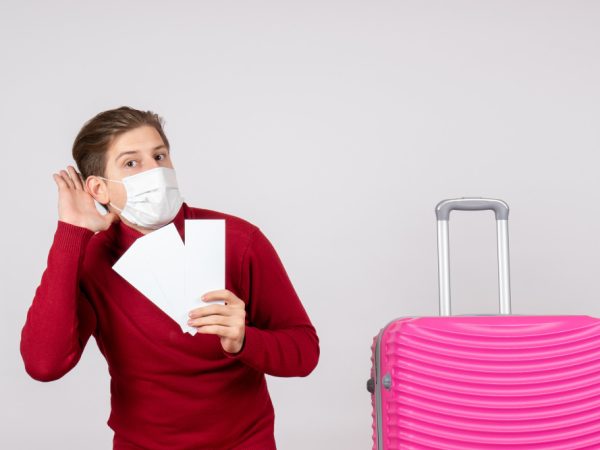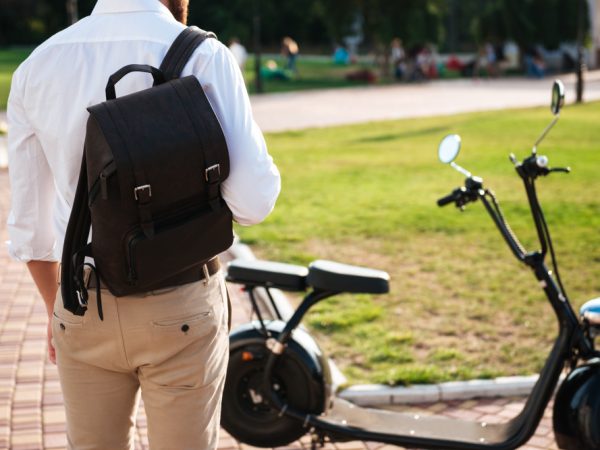Traveling with Pets: Tips for a Fun and Stress-Free Journey

Traveling with pets can be an exciting adventure, but it also requires careful planning and preparation. Whether you’re taking a road trip or flying to a new destination, ensuring your furry friend’s comfort and safety should be your top priority. To help you have a fun and stress-free journey with your pet, here are some valuable tips to consider.
Visit the Vet
Before embarking on any trip with your pet, it’s crucial to schedule a visit to the veterinarian. Ensure your pet is up to date on vaccinations and has a clean bill of health. This visit is an opportunity to discuss any specific concerns or considerations related to your pet’s well-being during the journey. The vet may recommend preventive measures for motion sickness or prescribe medications to alleviate anxiety, if necessary.
Identification and Microchipping
While traveling, there’s always a chance of your pet getting lost. Therefore, it’s vital to ensure your pet has proper identification. Make sure your pet’s collar includes an ID tag with your current contact information. Additionally, consider microchipping your pet as a permanent form of identification. Register the microchip with your contact details and keep the information updated. These measures significantly increase the chances of being reunited with your beloved pet should they go missing during the journey.
Crate Training and Familiarization
For both road trips and air travel, crate training is highly recommended. Introduce the crate to your pet well in advance of the journey, allowing them to get comfortable and associate it with positive experiences. Gradually increase the amount of time your pet spends in the crate, ensuring they have enough space to stand, turn around, and lie down comfortably. This familiarity will make them feel secure during the journey and reduce stress levels.
Traveling by Road
If you’re hitting the road with your pet, here are some essential tips to make the journey enjoyable for both of you.
Plan Frequent Breaks
On long road trips, plan for regular breaks to allow your pet to stretch their legs, relieve themselves, and have some water and food. Research pet-friendly rest stops or parks along your route to make these breaks more enjoyable. Keep your pet on a leash during pit stops to prevent them from wandering off or getting lost in unfamiliar surroundings.
Secure Restraints and Safety Measures
While driving, it’s crucial to ensure your pet’s safety by using appropriate restraints. Utilize a pet seat belt, travel harness, or crate to secure your pet in the vehicle. This prevents them from moving around excessively, distracting the driver, or getting injured in case of sudden stops or accidents. Remember to never leave your pet unattended in a parked vehicle, as it can quickly become dangerously hot or cold.
Flying with Your Pet
Air travel requires additional considerations when traveling with pets. Keep the following tips in mind for a smooth journey.
Choose the Right Airline and Flight
Not all airlines have the same pet policies or offer pet-friendly accommodations. Research airlines that allow pets in the cabin or have proper facilities for transporting pets in the cargo hold. Opting for a direct flight whenever possible reduces stress for both you and your pet, as it minimizes layovers and potential mishandling during transfers.
Familiarize Your Pet with the Travel Crate
or air travel, your pet will need an airline-approved travel crate. Familiarize your pet with the crate by following the crate training tips mentioned earlier. Additionally, affix clear and visible labels with your contact information to the crate. Include your name, phone number, and destination address. This will ensure that your pet can be easily identified and reunited with you if necessary.
Review Airline Requirements
Different airlines have specific requirements and regulations when it comes to traveling with pets. Familiarize yourself with these guidelines well in advance of your trip. Check the airline’s website or contact their customer service to understand any size restrictions, documentation needed, and health certifications required for your pet. Ensure you have all the necessary paperwork, such as a health certificate issued by a veterinarian, which may need to be obtained within a certain timeframe before the flight.
Conclusion
Traveling with pets can be a rewarding and enjoyable experience, as long as you take the necessary precautions and plan ahead. By visiting the vet, ensuring proper identification and microchipping, crate training, and familiarizing your pet with the travel crate, you can make the journey comfortable and stress-free for your furry companion.
Remember to plan frequent breaks and use secure restraints when traveling by road. If flying, choose the right airline, familiarize your pet with the travel crate, and review airline requirements to ensure a smooth journey.
By following these tips, you can create wonderful memories with your pet while exploring new destinations together. Embrace the adventure and cherish the special bond you share with your four-legged friend.
FAQs
Q1: Can I travel with my pet internationally?
A1: Yes, you can travel with your pet internationally, but it requires careful planning. Different countries have specific regulations regarding the importation of pets. Research the destination country’s requirements well in advance, which may include vaccinations, health certificates, and quarantine periods. Consult with your veterinarian and contact the embassy or consulate of the country you’re visiting for accurate and up-to-date information.
Q2: How can I help my pet stay calm during the journey?
A2: To help your pet stay calm during the journey, create a soothing and familiar environment. Bring their favorite blanket, toy, or bed to provide a sense of comfort. Play calming music or use pheromone sprays that promote relaxation. Additionally, avoid feeding your pet a large meal before traveling to prevent digestive issues. If your pet experiences severe anxiety or stress, consult your veterinarian, who may recommend medications or natural remedies to help keep them calm during the journey.
Read More: The Art of Slow Travel: Immersing Yourself in Local Cultures











